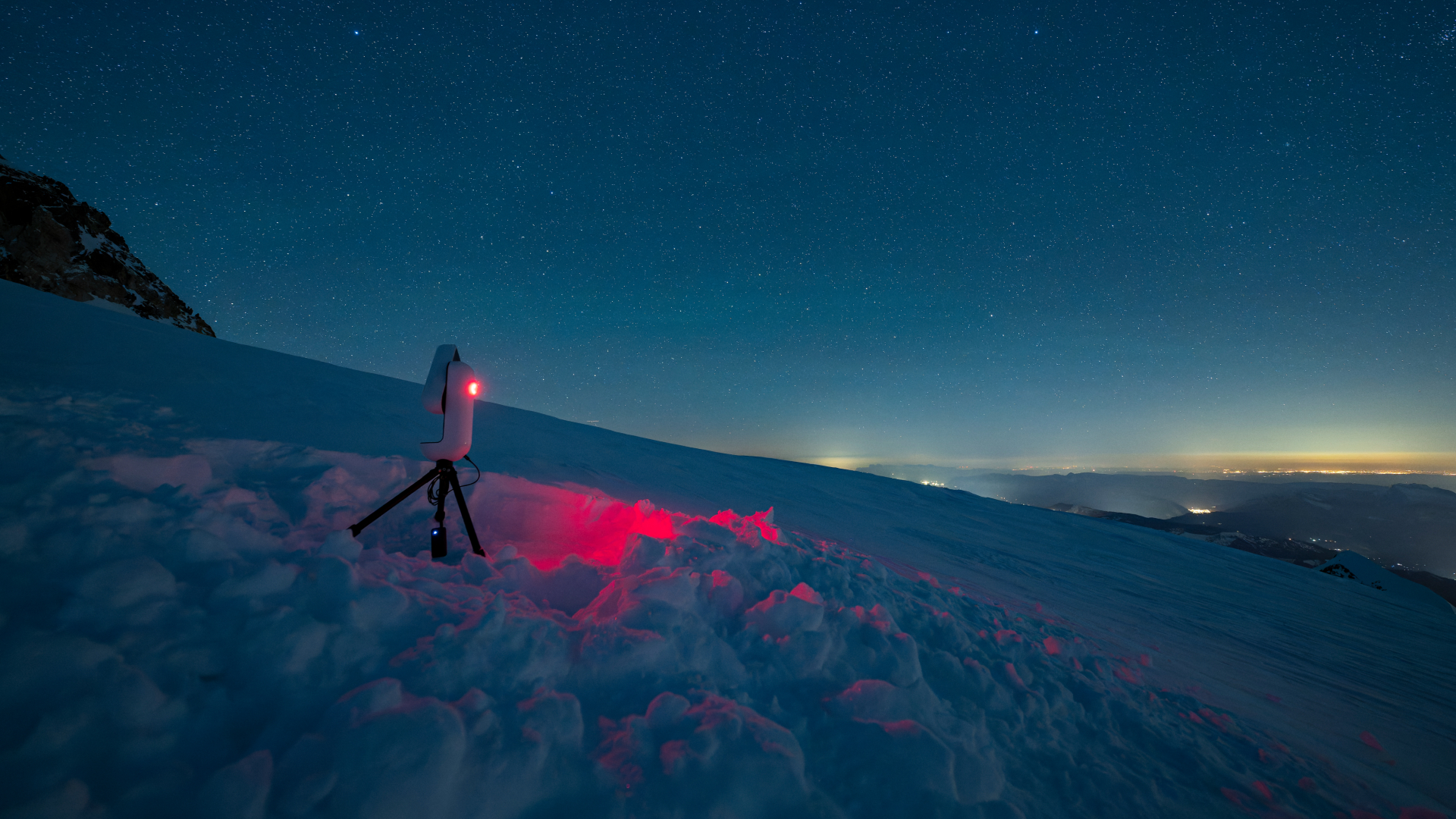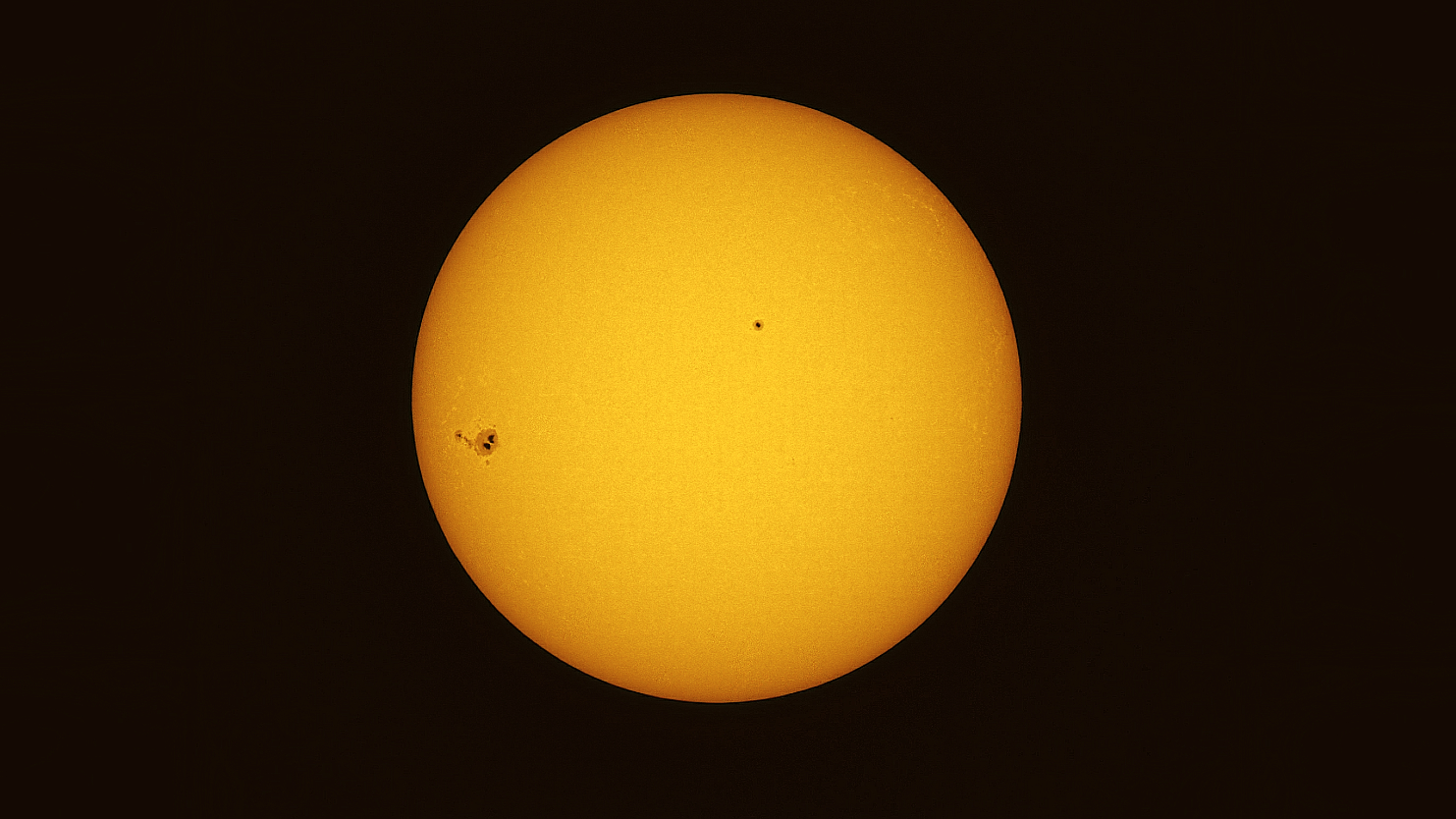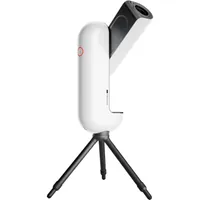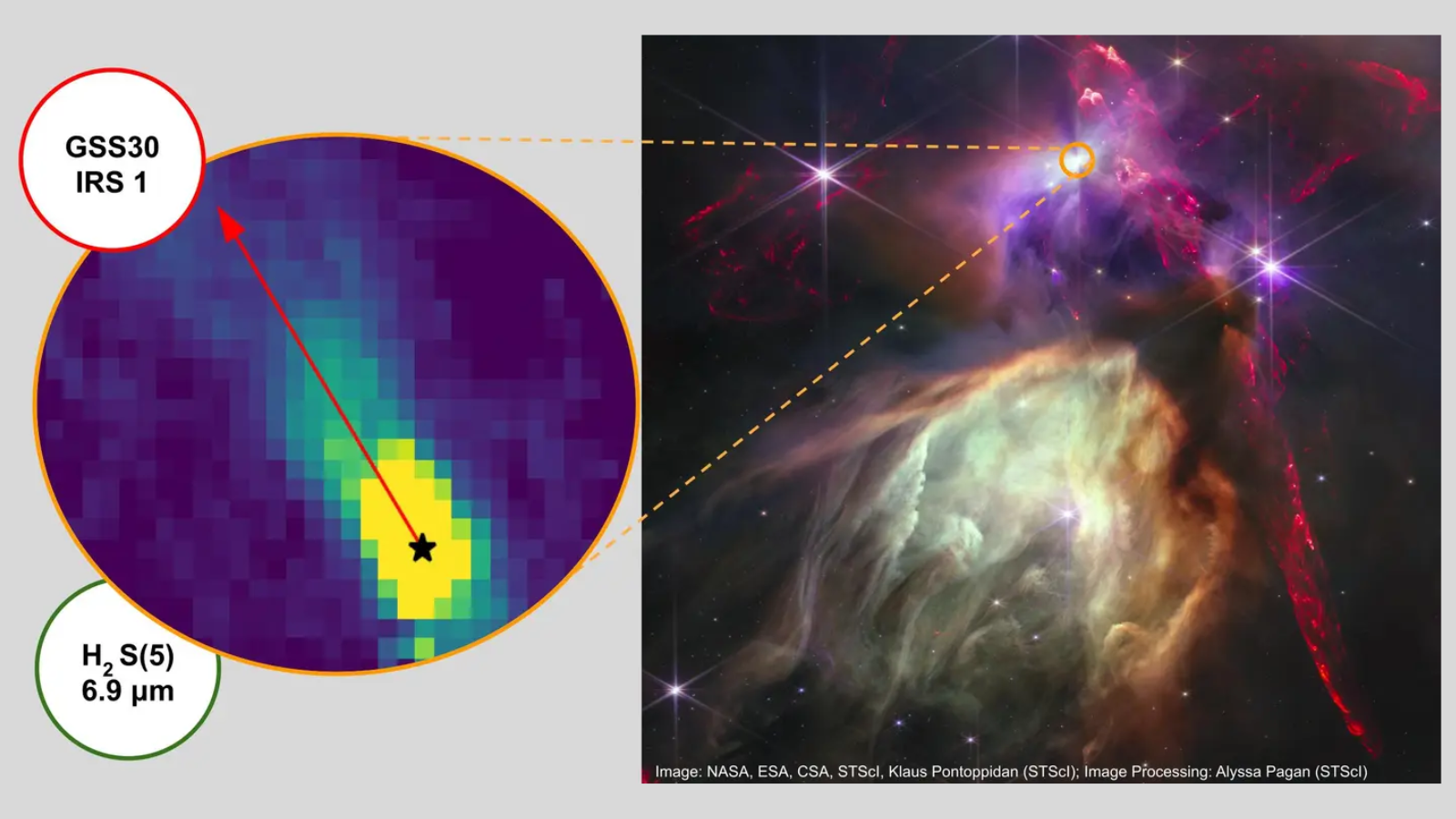Record-breaking high-altitude shot of sun's surface captured from one of Europe's tallest mountains (photo)
"The mountaineer defies gravity; the astronomer looks up. Both seek to reach the unreachable."
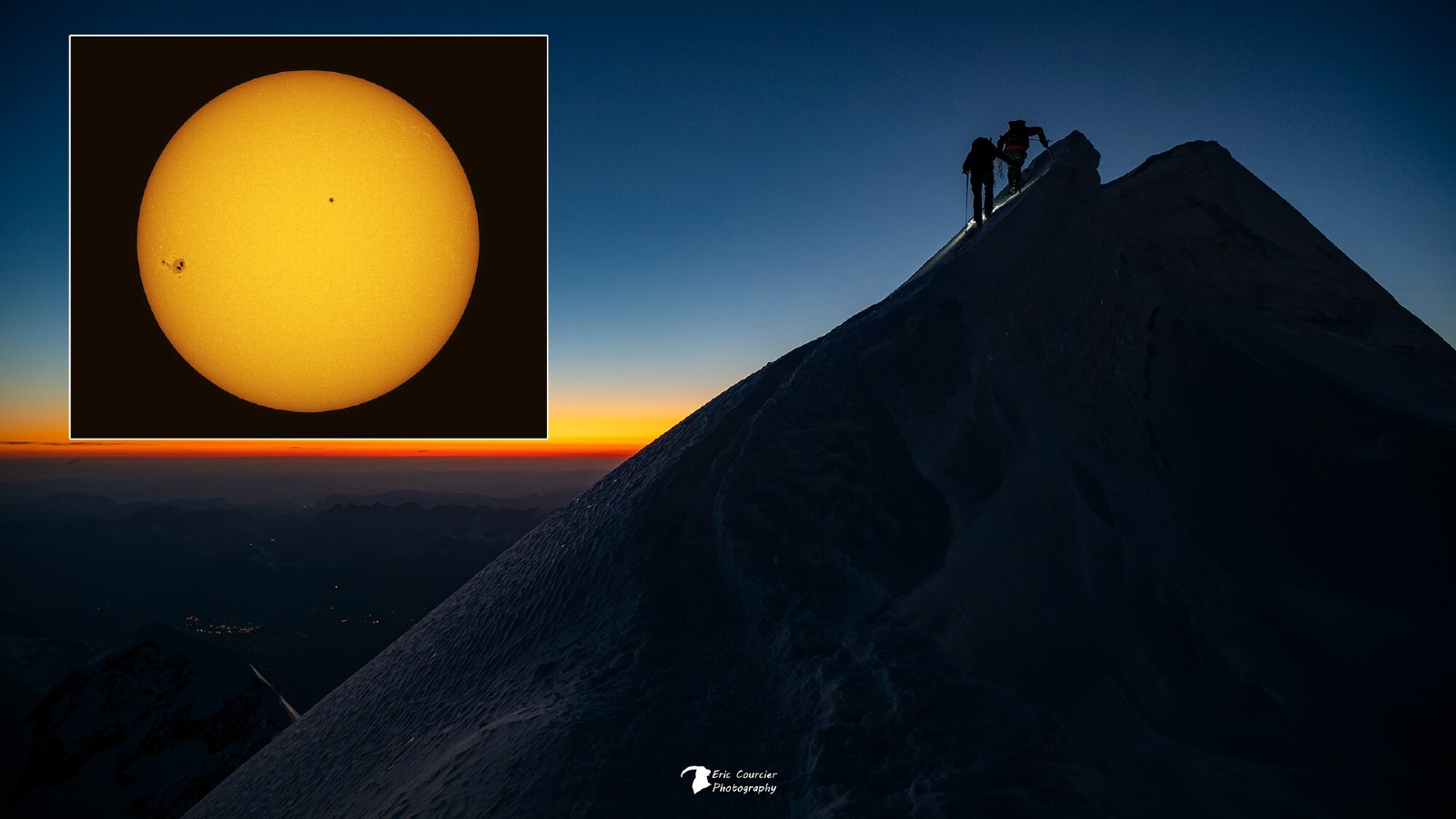
Cyril Dupuy, the founder of smart telescope maker Vaonis, has set a new record by capturing Europe's highest-altitude image of the sun with one of the company's telescopes during an expedition to scale Mont Blanc earlier this year.
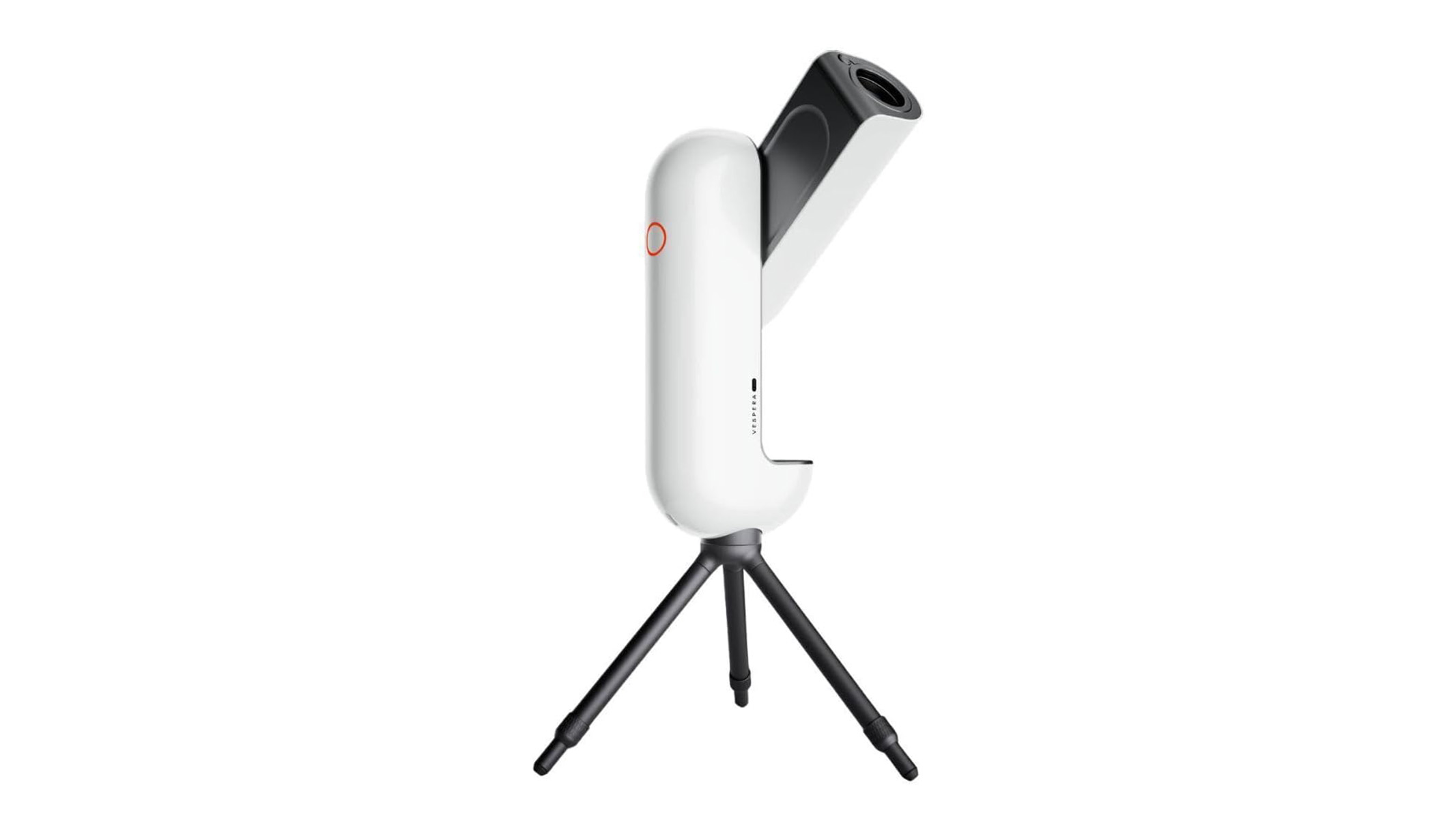
Wanting to see sunspots or far away galaxies? The Vaonis Vespera is a smart telescope for beginner astronomers. For a more indepth look, read our review of the telescope.
Dupuy set off with a cohort of three astronomy enthusiasts on April 29 to begin a grueling two-day climb up the slopes of the famous Mont Blanc mountain, located in the Alps bordering Italy and France. Carried alongside the usual mountaineering provisions was a peculiar item— a Vaonis' Vespera Pro smart telescope.
"Climbing a mountain and exploring the sky share the same spirit: a drive to rise above," said Dupuy in a statement detailing the challenging ascent. "The mountaineer defies gravity; the astronomer looks up. Both seek to reach the unreachable."
The smartphone-controlled Vaonis' Vespera Pro smart telescope has a simple outward design, eschewing the use of traditional eyepieces while featuring a single touch sensitive button on its pill-like outer shell. Pressing that button wakes the telescope up, prompting one side of its pill-like body to rotate upwards to reveal a technological eye designed to capture the planets, stars and deep-sky objects that populate the universe.
Dupuy's goal was to forge a path to the mountain's summit — some 4,806 meters (15,767 ft) above sea level — where he would set up the Vespera Pro to capture a high-altitude image of the sun's ever changing surface. The team also hoped to use the telescope's high resolution sensor to capture light from the remote Malin 1 galaxy, located roughly 1.2 billion light-years from Earth.
"Inspired by the Janssen Observatory built atop Mont Blanc in the late 19th century, I decided to follow in trailblazer Jules Janssen's footsteps and capture from the Alpine skies a unique image of the sun as well as the largest known spiral galaxy, a nod to Janssen's research - though this time armed with 21st-century technology," continued Dupuy.
Each member of the team shouldered a 35 lb (16 kg) backpack — along with the compact 11 lb (5 kg) smart telescope — and set themselves against the freezing mountain slopes. Ultimately, a dangerous snow bridge would put pay to Dupuy's bid for the summit, leading the team to deploy the Vespera Pro telescope close to the well-known Vallot shelter, 14,100 feet (4,300 meters) above sea level.
Breaking space news, the latest updates on rocket launches, skywatching events and more!
From this lofty vantage point, Dupuy was able to successfully capture the surface of our parent star in impressive detail, capturing a cluster of sunspots form on the western edge of the sun's disk, 93 million miles (150 million km) away. The team also captured the faint light of Malin 1, along with a swarm of other galaxies that share the same patch of sky between the constellations Virgo, Leo and Coma Berenices.
Be sure to check out our guides to the best smart telescopes available in 2025, which includes a range of Vespera smart scopes including the Vaonis Vespera II, which we lauded as an inexpensive beginner telescope capable of producing amazing deep-sky images.
The smartphone-controlled Vespera Pro Smart Telescope makes observing the night sky easy. It features a range of improvements over its predecessors, including an adjustable tripod, an 11-hour battery life and an improved sensor capable of taking high resolution images of the cosmos.
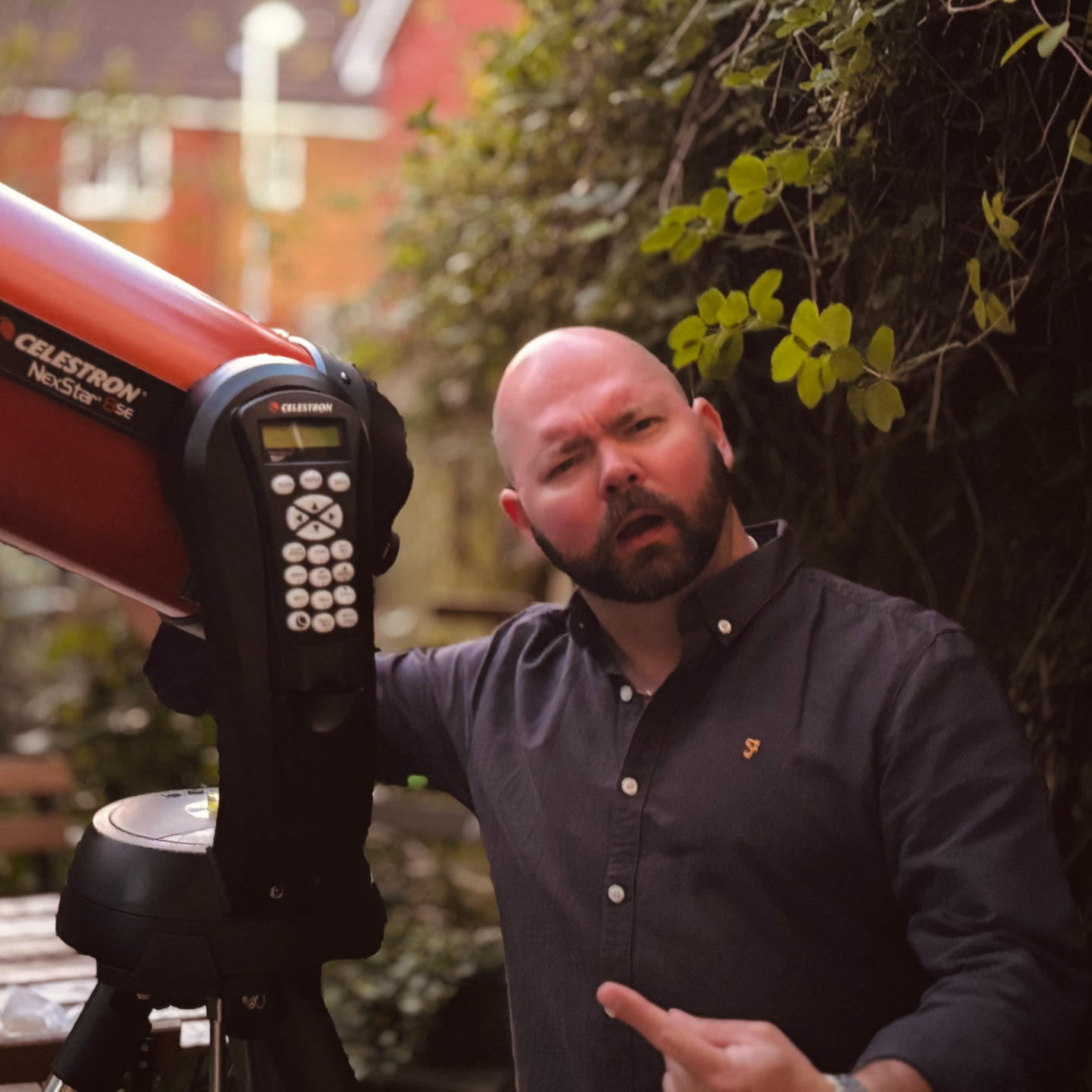
Anthony Wood joined Space.com in April 2025 after contributing articles to outlets including IGN, New Atlas and Gizmodo. He has a passion for the night sky, science, Hideo Kojima, and human space exploration, and can’t wait for the day when astronauts once again set foot on the moon.
You must confirm your public display name before commenting
Please logout and then login again, you will then be prompted to enter your display name.
